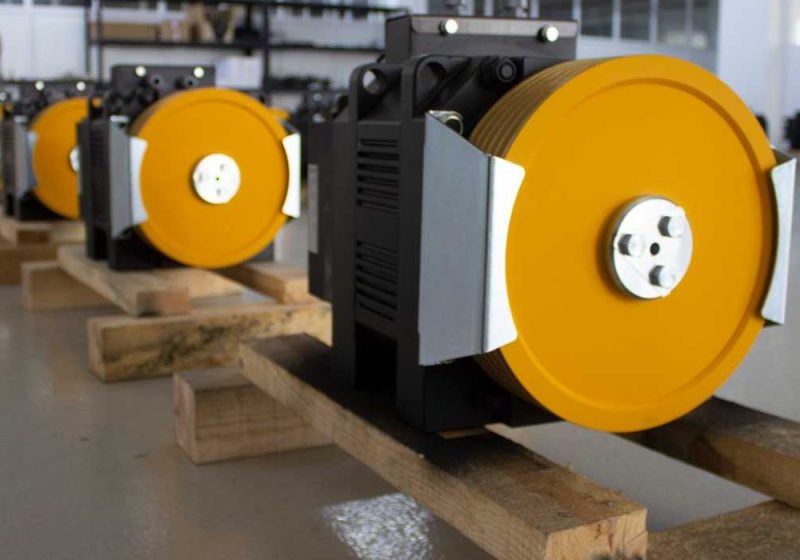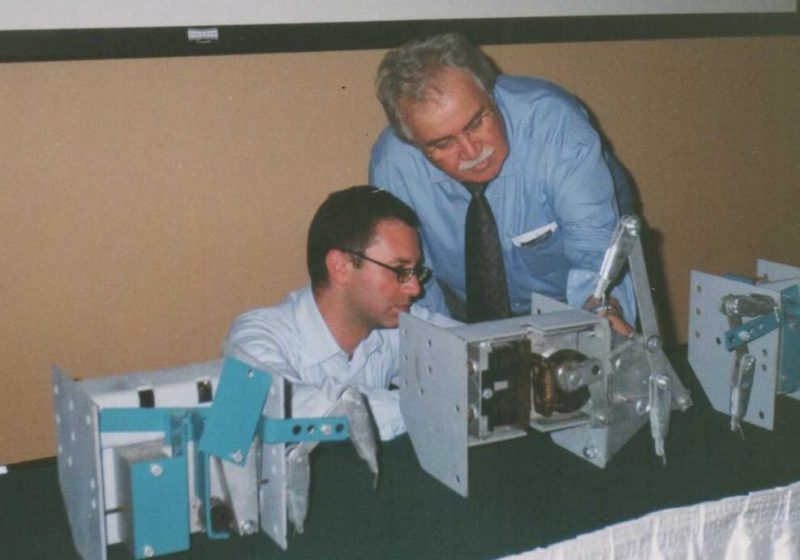We again share ‘A Brief Background of the Turkish Elevator Industry’ with you, the article written by Ersan Barlas and published in ‘Master’s Column’ in the 100th issue (March-April) of Asansör Dünyası in 2011.
Upon taking over his father’s textile plant in England in 1790, William Strutt made a design to genuinely solve the “man-and-load” lifting problem in 1803 and 1804: a crane that manually operated a drive mechanism consisting of a belt and pulley. In 1812, frost constructed another advanced equivalent of that mechanism.
Being among the pioneers of load-lifting system manufacturers, Waterman designed an elevator making use of a drive mechanism of a B. Corlise’s steam engine. But the building in which it was installed burned in 1883. It was overtaken in 1885; the use of electricity in 1880s and 1890s made it possible to operate the vertical lifting mechanism of a B. Corlise’s steam engine mechanism feasible.
Of course, Elisha Graves Otis’ legendary fame brought his name to be equivalent to the concept of the passenger elevator. In May 1854, Otis displayed his “Advanced Elevator” at New York City’s Crystal Palace. During the demonstration, the platform was loaded, elevated and left for free fall by cutting its rope while he was on the platform. In front of the onlookers, the brake was applied and the platform stopped falling. This demonstration proved the safety of the elevator’s system. At the time, the New York Tribune said the demonstration showed “science, industry and discovery.”
In 1865, Burkhard Gantenbein & Suns registered as the seventh oldest company in Turkey, and operated under the title of Buga Otis and, later, in the 1920s, obtained representation of Wertheim (Austria). Accomplishing so many groundbreaking events under the leadership of Eduard Matschnigg and Özdemir Gülan, Gantenbein entered into a partnership with Otis in 1991.
The oldest elevator ever installed in Turkey is the elevator provided for Hotel Pera Palace. The elevator was modernized by Buga Otis in 2010 and revitalized for the service again. The construction of Hotel Pera Palace was initiated in May 1881 and commissioned in October 1892. Constructed to host the passengers of the Orient Express arriving to Istanbul from Paris, the hotel operation was undertaken by “Compagnie Internationale des Grands Hotel” in 1896.
Bora Gülan, General Director of Buga Otis, memorializes the arrangement with Otis by displaying an 1893 purchase order letter bearing the amount US$1,500. The lift was placed in 1893, much before its modernization in 2010 and taken back into service in Turkey. When it opened, Hotel Pera Palace became the first place to use electricity in Istanbul. Neighbors sometimes benefited from the hotel’s emergency use of a generator.
A historical elevator built in Izmir in 1907 and named after its location was operated with water. Nesim Levi, a Jewish businessman, built the elevator because he did not agree with the burden of inhabitants of two districts being separated by 155 steps. The elevator was eventually dismantled for modernization and a new elevator was installed; however, it lacks any historical significance.
The construction of Hidiv Palace, located in Çubuklu, Istanbul, was started in 1903 and completed in 1907. It has been an unusual work of art and has three elevators operated by steam. Its mechanical portion has been preserved, but the steam drive has been taken out of operation. Had it been preserved, it would have a tremendous place in the world history of elevators. This is because the three elevators were operated from a drive system with a single boiler, which made them exemplary in the world. All drives in these elevators were mechanical, with the drive and control being operated strictly by steam power. Calling the elevator was made by a button that was in fact a plunger of a valve. When the elevator reached to the requested floor, you would press onto another plunger of the valve and the elevator stopped.
Sometime later, Emin Aktar established “Türkeli Asansör Firmas.” In 1947, Turkeli became the representative of the Swiss Schlieren company, known as “Schlieren Türkeli” in Turkey, for the fabrication, erection and maintenance of elevators and escalators. Another onetime company, “Lebe Brothers,” was a representative of Swiss Schlieren company in Turkey. Schindler and Schlieren were two separate Swiss companies.
Emin Aktar and Koç Group established the representative companies of Schlieren and Hausan, but they later terminated their operations. Koç Group assigned Hausan Elevator Co. to another corporation, and Schlieren was held by Aktar.
In 1992, Schindler purchased Wertheim and Schlieren in Switzerland, with the company, formally known as Schlieren Türkeli, now operating under “Schindler Group” as an independent Swizz company. There are now international companies, like KONE, Mitsubishi, Schindler, TKE and Otis, operating in Turkey. Furthermore, there are numerous companies offering full machinery manufacturing and elevator installation for local and foreign markets. Loher is an escalator company in Izmir that accomplishes remarkable achievements in exports.
Following is a list of some of the oldest elevator companies and their senior managers:
Josef Dülgeroglu: J.D. Elevator company. The company first provided elevator installations in 1930, building the elevator at Ankara Mansion of Mustafa Kemal Atatürk, founder of Turkey. In 1949, Engin Gökhan was incepted into the company.
Yorgo Mistillioğlu: An elevator mechanical group manufacturer.
Laskaris Mistillioglu: Elevator mechanical group manufacturer founded by Laskaris Mistillioglu, Yani Koleros and Yüksel Akay under the name Akay Asansör Makine-Motor Fabrikasi.
Sisman Yorgo: Elevator erection master.
Leonida: Door, lock and cabin frame manufacturer.
Kozma Kalayci: Lock and autocrat manufacturer.
In May 1955, Erol started to work for the accounting department of Mehmet Kavala. Upon request by Kavala, Erbirer founded Snates Kollektif fiirket for elevator erection and Tekimal Kolektif fiirketi for manufacturing in September in the same year. This was the beginning of the partnership between Selahattin Genç and Kavala. Later on, Snates Tekimal Kollfiti. became the school for the foundation of numerous valuable elevator companies. Before the foundation of Snates there were few elevator companies.
The Istanbul Elevator Association and AYSAD (Elevator and Escalator Businessmen Association) were established in 1971 and 1972, respectively. There have been numerous significant elevator associations founded in many provinces and, in particular, in Istanbul and Izmir, leading to the maturation of the industry throughout Turkey. Elevator companies operating today in Turkey are generally holdings of leading world companies or as partner establishments. All local and foreign-originated companies have either been CE certified or are in the course of gaining certification. The course of the certification comes from authorized certification organizations.
Since 1920, we know that there are the companies operating mainly in the field of maintenance and erection. What we do here is name several leading senior managers and companies included into the history of the Turkish elevator industry.
It is likely to say that there are so many others not included here. You are therefore kindly requested to make your contribution to “History of Turkish Elevator.”
Get more of Elevator World. Sign up for our free e-newsletter.








